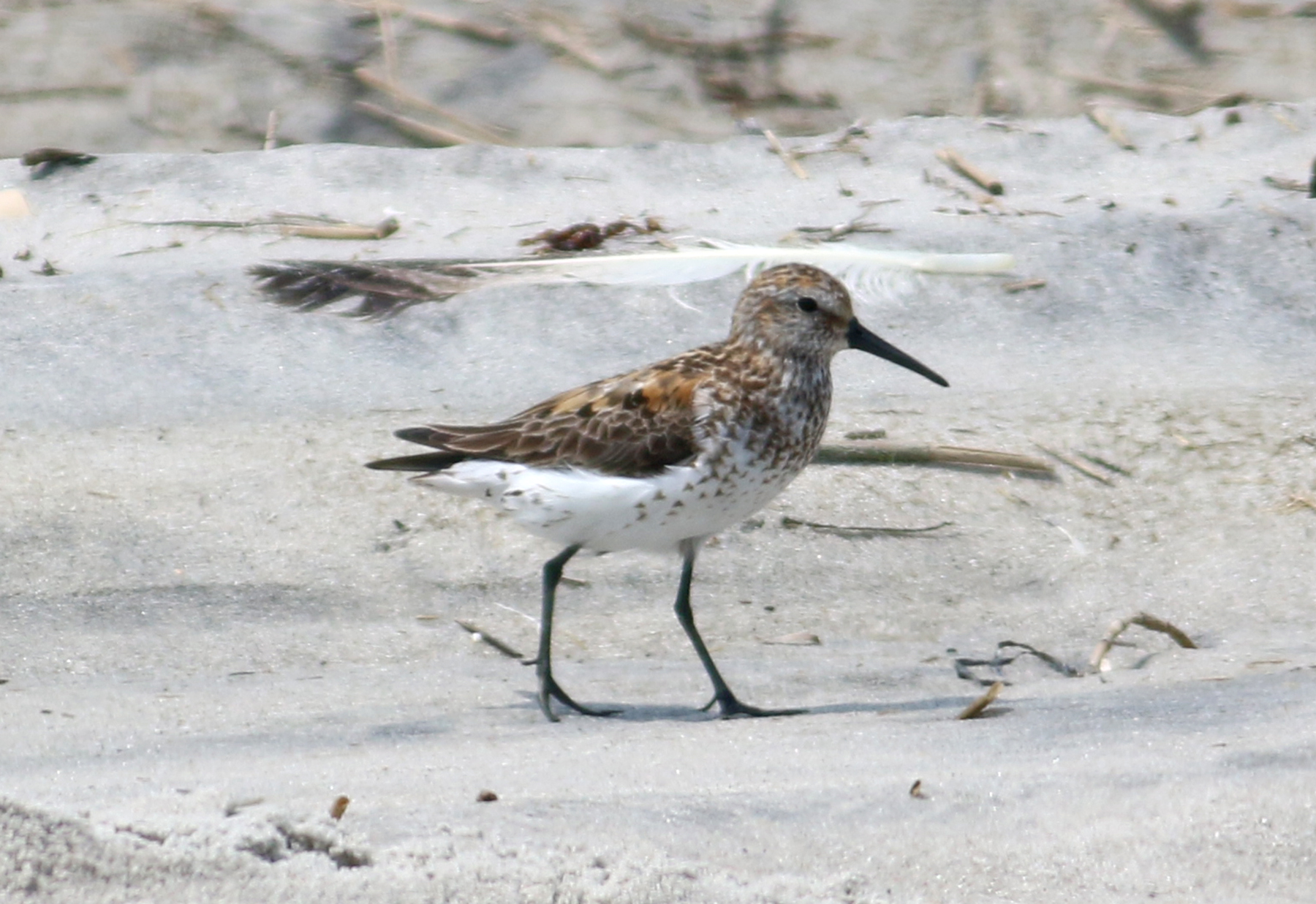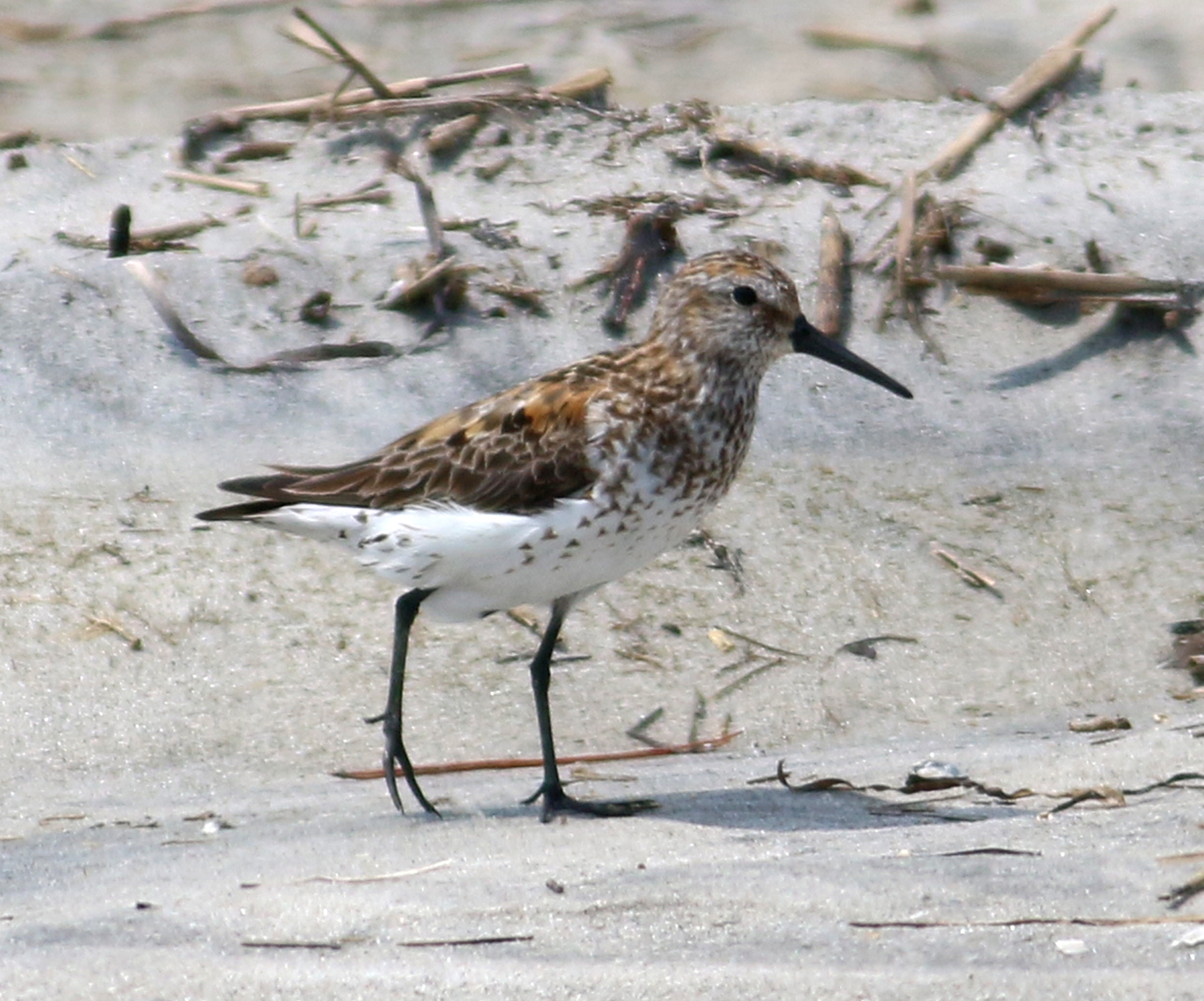I’ve always had troubles with Western Sandpipers. I could never be sure whether I wasn’t seeing any, or whether I was seeing them but not recognizing them right in front of my eyes. Plus, all of the ‘peeps’ can be somewhat difficult to distinguish, being small active shorebirds with relatively subtle differences, especially if we are viewing them from a distance or under sub-optimal conditions (poor light, windy conditions, in tight flocks, partly submerged in water, etc.).
Yesterday I enjoyed a delightful day on the Jersey Shore with thousands of shorebirds at close range, including a few Western Sandpipers. But this time I was able to identify them readily and find them quite easily from within a sizeable flock of the related and similar Semipalmated Sandpipers. I thought that I’d share the experience and a few photos with you in the hope that it might help you to find your own Westerns.

Here is a Western Sandpiper. Superficially it resembles other peeps, but more careful observation reveals the three characteristics to look for: rufous tones to the head and scapular feathers, chevrons that extend down the side of the breast, and a relatively longer, thinner, and slightly drooping bill.
So what should we be looking for if we want to find Western Sandpipers this time of year? The distinguishing characteristics are that when compared to Semipalmated Sandpipers, Westerns Sandpipers have more rufous tones in their plumage, more extensive chevrons on their breast/belly, and a longer, thinner bill. For me, trying to find one by comparing bill sizes alone was not productive at all. But simply sorting through a flock of sandpipers by searching for birds that have the rufous tones or the chevrons proved rather easy, especially when these characteristics were combined. Plus, it didn’t matter too much which way the bird was facing; if the birds were facing me, looking for the extended chevrons was simple, and if the birds were facing away from me, I searched for patches of rufous feathers. To back up the identification, the length of the bill then became a third supporting characteristic.
Here we have a pair of photos of Western and Semipalmated Sandpipers in close proximity to each other in different positions. Notice how similar yet different they appear in direct comparison with each other.

The differences between a Semipalmated Sandpiper (sitting bird on the right) and a Western Sandpiper (upper right) become more noticeable when they are side-by-side. Notice the duller overall color of the Semipalmated and the shorter bill.

Here the differences in the breast pattern become more obvious, with the Semipalmated Sandpiper (on the left) sporting a more limited dull brown/gray breast band, and the Western Sandpiper in the center having more extensive chevrons.
